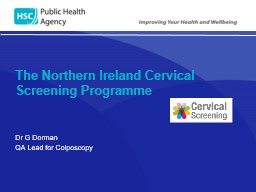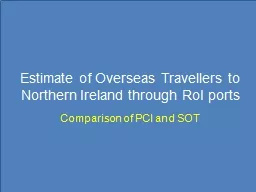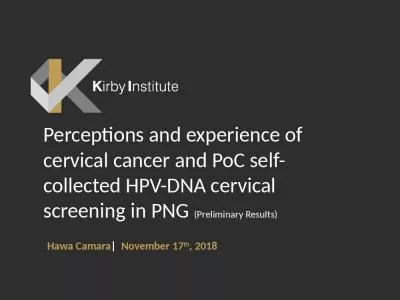PPT-The Northern Ireland Cervical
Author : barbara | Published Date : 2024-02-03
Screening Programme Dr G Dorman QA Lead for Colposcopy Cervical cancer 8090 new cases of invasive cervical cancer per year 3040 deaths per year Associated with
Presentation Embed Code
Download Presentation
Download Presentation The PPT/PDF document "The Northern Ireland Cervical" is the property of its rightful owner. Permission is granted to download and print the materials on this website for personal, non-commercial use only, and to display it on your personal computer provided you do not modify the materials and that you retain all copyright notices contained in the materials. By downloading content from our website, you accept the terms of this agreement.
The Northern Ireland Cervical: Transcript
Download Rules Of Document
"The Northern Ireland Cervical"The content belongs to its owner. You may download and print it for personal use, without modification, and keep all copyright notices. By downloading, you agree to these terms.
Related Documents














